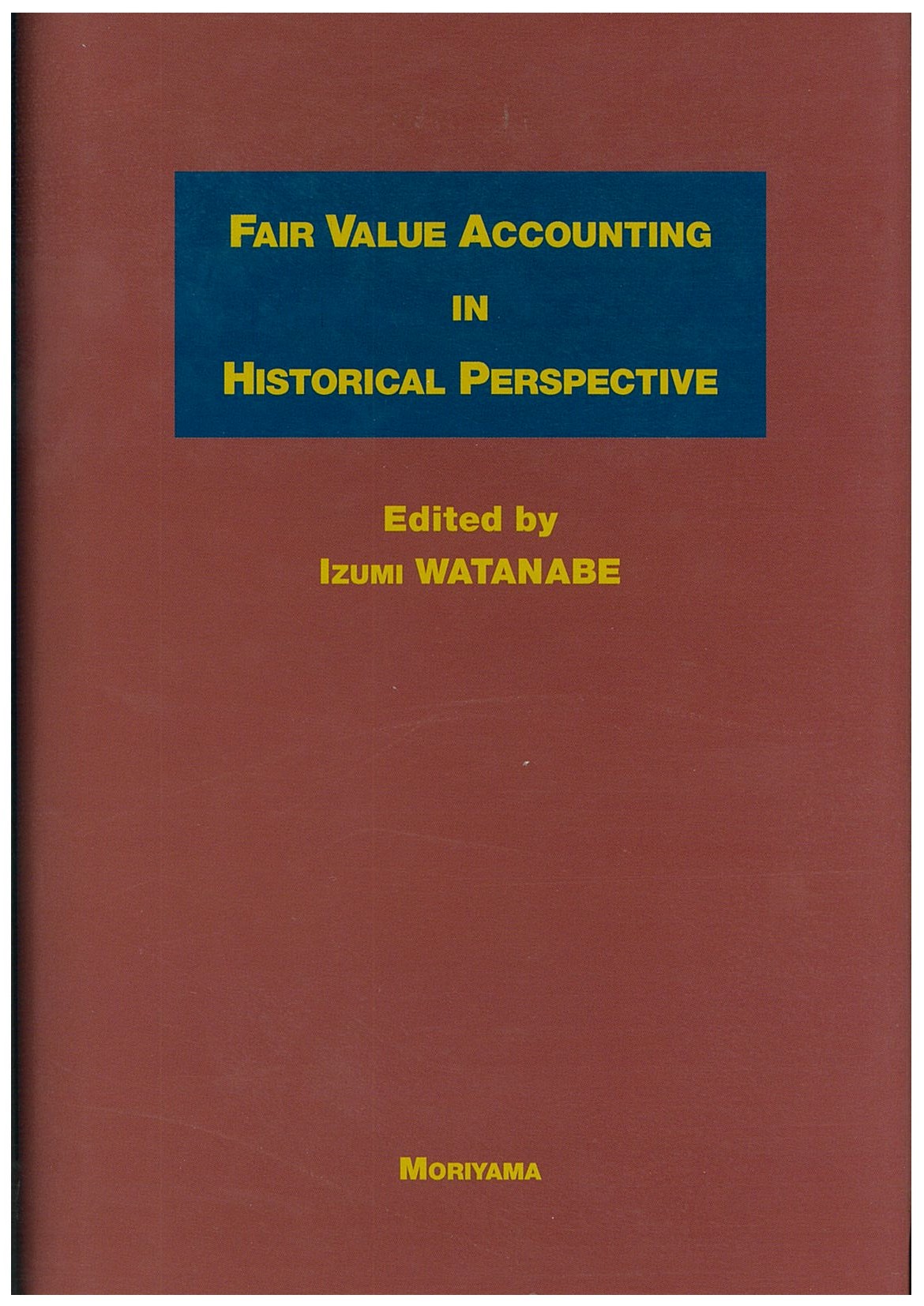Fair Value Accounting In Historical Perspective
渡邉 泉 編著
松本 敏史 著
宮武 記章 著
宮宇地 俊岳 著
高須 教夫 著
杉田 武志 著
佐々木 重人 著
岡嶋 慶 著
久保田 秀樹 著
小野 武美 著
| 第1刷発行日 | 2014/02/16 |
| 判型 | A5判 |
| ページ数 | 288ページ |
| 本体価格 | 6,000円 |
| 定価 | |
| 在庫状況 | 在庫あり |
| ISBN | 978-4-8394-2139-7 |
目次
List of Contributors
Acknowledgements
Foreword
Introduction
Section Ⅰ: Status and Aspects of Fair Value Accounting
Chapter 1: Fundamental Functions of Accounting and Fair Value Measurement ―From the Perspective of Distributable Income Measurement Function―
1-1. Introduction
1-2. Triangular Relationship in InstitutionalAccounting Systems
1-3. Distribution Capability of Appraisal Gain
1-4. Characteristics of Fair Value Accounting
1-5. Searching for Distribution Standards in Overall Fair Value Accounting
1-6. Conclusion
Chapter 2: Advent of Fair Value Accounting and Its Historical Background
2-1. Introduction
2-2. S&L Crisis and Expectations toward Current Value Principle
2-3. Arrival of Fair Value Accounting
2-4. Enron Affairs and Fair Value Accounting
2-5. Subprime Loan Problem and Fair Value Accounting
2-6. Conclusion
Current Status and Issues of Fair Value Accounting
3-1. Introduction
3-2. Survey Pattern
3-3. Accounting Functions and Hardness of Fair Value
3-4. The Information Role and Fair Value Accounting
3-5. The Cobtract Role and Fair Value Accounting
3-6. Conclusion
Chapter 4: Conflict in Fair Value Accounting ―The Spell of Realization Principle―
4-1. Introduction
4-2. Switch of Views of Financial Accounting from the Revenue and Expense View to the Asset and Liability View
4-3. Problems involved in the Section of Measurement Attributes in the Asset and Liability View
4-4. Development of the Revenue and Expense View and the Realization Principle
4-5. Corporate Risk and Accounting Measurement
4-6. Conclusion
Section Ⅱ: Verification of Fair Value Accounting from the Historical Perspective ―From Current Value to Fair Value Measurement―
Chapter 5: The British East India Company's Market Valuation in the Second Half of the Seventeenth Century(1664-1694)
5-1. Introduction
5-2. Overview of EIC and its Method of Selling Imported Commodities
5-3. Unsold Goods Valuation Method at Closing of Ledger
5-4. Sale Price-Based Estimation
5-5. Treatment of Valuation Differences Based on Sale Price, etc.
5-6. Conclusion
Chapter 6: Apperance of Current Valuation in Seventeenth and Eighteenth Century Britain ―Ledger Entries of Monteage, Malcolm, Hayes and Hamilton―
6-1. Introduction
6-2. Advent of Current Valuation
6-3. Current Valuation of Fixed Assets up to the Eighteenth Century
6-4. Eighteenth Century fixed Asset Valuation Methods
6-5. Advent of Current Valuation of Inventory Assets
6-6. Conclusion
Chapter 7: Significance of Current Value Information in Nineteenth Century England Corporate Accounting ―Statute Companies and General Registered Companies―
7-1. Introduction
7-2. The Role of Current Value Information in the Accounting Practices of Grand Junction Railway Co.
7-3. The Role of Market Value Information in the Accounting Practices of Neuchatel Asphalte Co.
7-4. The Role of Market Value Information in the Accounting Practices of Natal Land and Colonization Co.
7-5. Conclusion
Chapter 8: The Evolution of Audit Thought on Asset Verification during Period 1880-1940: in the UK and the US practices
8-1. Introduction
8-2. Verification Structure Underlying the British Professional Audit
8-3. Conception of "Verification of Assets"
8-4. American Balance Sheet Audit and Verification of Assets therein
8-5. Conclusion
Chapter 9: Classical Inflation Accounting and Fair Value Measurement
9-1. Introduction
9-2. Experiments for Systematization of Classical Inflation Accounting and the New Financial Instruments Project in the US
9-3. "Entity Specific Assumptions" versus "Market Participant Assumptions"
9-4. History of Acceptance of Valuation at Current Price and Fair Value Measurement in Japan after World War II
9-5. Conclusion
Chapter 10: Various Aspects of Divergence from Fair Value Accounting in History ―Actual Requirements for Application of Market Value Accounting―
10-1.Introduction: Basic Stance Regrarding Market Value Accounting Application
10-2. An Interpretation of the Financial Crisis and Easing the Application of Market Value Accounting
10-3. Function of Liquidity in Market Value Accounting
10-4. Market Value Deviation Theory Abandonment of Market Value When Liquidity is Lost
10-5. Debating the Appropreateness of Market Value Accounting Application and its Avoidance
10-6. Conclusion: Requirement of Market Value Accounting Application
Chapter 11: A Waring Bell from History on giving too much Rmphasis to the Usefulness Approach
11-1. Introduction
11-2. True Nature of Accounting: Historical Cost as Guarantor of Evidentiality
11-3. Fundamental Role of Double-Entry Bookkeeping as a Pillar of Accounting's Structural Computation
11-4. Historical Cost and Current Value: Nothing more than Different Points in Time
11-5. Historical Cost and Market Value in Transaction Value Accounting
11-6. Discounted Present Vale and Feasibility Concept
11-7. Retreat of Reliability and Verifiability and Faithful Expressions
11-8. Conclusion: Original Role of Accounting
Index

